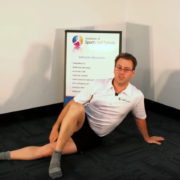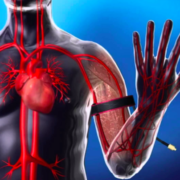THINK: To Rub or Not to Rub? with Brendan Cole
Brendan Cole is one of Australia’s greatest 400m Hurdlers. A 2012 Olympian, “BJ” as he is known to many is a person who prides himself on his ability to problem solve.
To compliment his career in elite sport, BJ has a keen understanding of the intricacies of movement with his Performance Therapy and Soft Tissue training. Brendan is a former Soft Tissue Therapist for Netball Australia, Gymnastics Australia and the Australian Institute of Sport. He is proficient in Clinical Pilates, group Pilates, and Exercise Rehabilitation, and provides strength and conditioning and rehabilitation support services. Brendan currently has a coaching role as well as performance therapy working with elite track and field athletes, and is the head coach of World Athletics Centre, Australia.
HP are extremely pleased to welcome Brendan Cole as one of our Key Contributors.
Respect the athlete, Respect the Therapist
In my role as a therapist, the question is often asked “What are you ACTUALLY doing?”
In my earlier, client-pleasing-and-insecure days, I used to get offended by this. I thought that the client/athlete was critiquing my work and questioning why they were paying $100 an hour for some ‘voodoo crap.’ I realised most of the time that the person on the table was really just curious as to why therapy works, and what is happening to the body as a result of what we do.

Brendan-Hands on
The title of these posts are somewhat ‘tongue in cheek’. The idea of doing a ‘rub’ is a little frowned upon in some high performance therapy circles, with the premise that this ‘rubbing’ is considered above the skilled therapist and only for someone with little skill or knowledge. I mean not to offend. All forms of massage, or soft tissue manipulation (whatever the buzz word or phrase is these days is) have some merit and they, as well as the therapist undertaking it, deserve recognition…. as well as dissection.
These posts are written to give some light into the things that go on around, and beneath the skin when we do treatments as therapists. I have attempted to write this with the coach, athlete, and therapist in mind; hopefully giving some intuitive personal insight as well as scientific backing to what, why, and how we do what we do. I will be dispelling some of the many myths, as well as supporting some theories on therapy treatments, and the effect they have on our complex bodies.
[Tweet “”We see them as broken and forget the reasons why they are amazing athletes””]
Complex is the important word here. I know from experience and my own mistakes (there are many) that as therapists we see the client/athlete as “their injury.” Someone walks into our clinic, or onto our table, and tell us of the presenting issues. We then get a history, do an assessment and get to work. So often we fall into the trap of only looking at the pain, site of injury, or of what is ‘wrong’ with them. We see them as being broken, and forget the reasons why they are an amazing athlete, or otherwise healthy. We also treat with a fairly limited perspective of what we are doing, sometimes forgetting the multiple systems we are affecting.
For example, in the environment I currently work in, I am almost always treating beside the track before, or during a session. I am working on some extremely high level professional sprinters; their systems are very sensitive, and my approach should be as well. If I do heavy work through a hamstring, or long static trigger point therapy, not only can this take too much tone and tension from the system, but can induce a parasympathetic nervous response. This response will reduce their neuromuscular readiness and ‘send them to sleep’.
We treat multiple highly elaborate, and intricate systems every time we put our hands on a person. Hopefully these posts can give rise to an appreciation for the power of our input, as well as tell some cautionary tales for those in the business of high performance sport.

Question Everything
A ‘flush’ treatment after a hard session or competition is fairly synonymous of our sport of track and field. We see the benefits of this in the subjective and objective betterment of the athlete’s recovery, but are we doing what we think we are?
A Canadian study in 2010 was published which investigated the effects of massage on the removal of lactate and other bi-products of high intensity exercise; the results of this study I will get into soon. This “post-exercise rub” is a practice that most therapists have taken part of at one stage of their careers, and when we are ‘churning’ through high numbers of clients/athletes that we have been misled as to we are actually doing underneath the skin. For athletes, this is something with a similar stigma… Why? It’s just what we do. Right? “Get some of that lactic flushed out,” I hear the unaware coach tell an athlete quite often.
It was suggested by our early soft tissue educators that massage after an exercise ‘improves blood flow’ or ‘gets rid of the lactic’ which will, in turn, aid recovery. It seems that these are very questionable statements and that our magic hands don’t actually have much of an effect at all on our circulatory system. We may even by hindering it! For those who remember, we were told to direct the effleurage stroke towards the heart,
[Tweet “We have been misled as to what we are actually doing under the skin”]
we were told we were increasing circulation, and that this would help the body process lactate faster. Let’s delve into the physiology and scientific evidence a little in the next post. In the meantime, let’s think some more about the why, the how, and the what of treatments do. Try something different with your therapist, or explore some new techniques or timing if you are a therapist who ‘goes through the motions’. As one of my current mentors says, “let’s be better, people.”
next post from Brendan Cole: The Lactate Fallacy.












